Such a bright and unusual flower instantly attracts attention. Often the thought even creeps in that such an overseas, outlandish guest will require equally complex and sophisticated care. But caring for adeniums in the house is not so different from caring for other indoor flowers.This article describes in great detail how to grow adenium at home and avoid annoying mistakes that gardeners sometimes make.
Important! It is recommended to wear gloves when caring for indoor adenium flowers, since the juice released from the cut is poisonous.
Conditions for growing adenium
Despite its African origin, the flower grows well in apartment conditions. But caring for adenium at home has its own subtleties that must be taken into account:
- sunny location;
- loose soil;
- proper nutrition;
- moderate watering.
What to do after buying a flower
Caring for a desert rose begins from the first day of purchase. The substrate of a store-bought flower is not always suitable for long-term cultivation and does not always meet the requirements for the normal development of adenium. If the purchase occurred in winter, then transplantation is postponed until the beginning of the growing season.
Choosing a pot
The shape of the pot changes at different stages of culture development. Young adeniums develop a vertical root; therefore, narrow and tall pots are chosen for them. In adult plants (trunk with a diameter of more than 6 cm), the development of roots goes in breadth, so choose a wide and low dish, such as a bowl. For transplantation, choose a container that exceeds the size of the root system.
A necessary element of the pot is drainage holes, there should be a lot of them.
The material of the planting container does not matter. You just have to take into account that in uncoated ceramic dishes, moisture evaporates faster than in pots made of plastic or glazed ceramics.
What kind of soil is needed for a flower?
The main conditions for choosing soil are air and moisture permeability, friability and neutral acidity.Mixtures of ready-made soil substrates are suitable for cacti or succulents.
Leavening agents such as vermiculite, perlite or coarse river sand are added to them with the obligatory addition of charcoal. Coal not only plays the role of a leavening agent, but also disinfects the soil.
You can prepare the soil yourself by taking humus, turf and baking powder in equal parts. Such soil is structured, allows air and moisture to pass through well, and does not compact after watering.
Planting adenium
After the growing conditions have been created, the soil has been prepared and a pot has been selected, it’s time to start planting adenium. You need to add a layer of drainage to the bottom of the pot, fill it with sand and place the plant on it, straightening the roots.
All that remains is to fill the container with soil and place it in the brightest place. In cloudy, cool weather, the first watering after planting can be done after 2-3 days. In hot weather, water immediately, but moderately.
How to care for adenium in an apartment
With proper care, you can grow an amazing flower with a thick, powerful trunk, called a caudex, bright and luscious foliage, and get early and abundant flowering. The photo shows that the shape of the caudex is individual for each plant.
Light, heat and moisture are interdependent parameters. When light and heat decrease, it is necessary to reduce watering and, conversely, increase watering when temperature and lighting increase.
Lighting
Adenium prefers bright light, including direct sunlight. In an apartment, it is best to place the flower on the windowsill of a south window.
The more sun the flowers receive, the more abundant the flowering will be, the more magnificent and stronger the crown will be.Adeniums tend to stretch towards the sun, so the trunk can tilt in its direction. To avoid unplanned curvature of the trunk, the plant is periodically turned with different sides to the sun.
When the amount of light decreases in the autumn-winter period, you should lower the room temperature and reduce watering.
Temperature
One of the important stages in caring for adenium in the house is creating an optimal temperature that promotes the harmonious development of the plant. In summer it is +22°...+35°C, in winter the flower can exist at +12°...+16°C if it is not possible to maintain conditions close to natural.
The flower reacts in the same way to a prolonged increase or decrease in temperature - it slows down growth. And at temperatures below +15°C, most species shed their leaves.
Humidity
Desert roses have no particular complaints about air humidity. The flower does not need spraying.
Watering
In summer, during the period of active growth, adenium needs regular watering. The higher the air temperature, the more moisture the flower requires. A new portion of water is necessary when the top layer of soil dries out after the previous watering.
In winter, in a cool room, watering should be minimal, depending on the condition of the plant. If it is possible to maintain the conditions for keeping adenium close to natural, and provided that the plant continues to grow, watering is carried out as usual.
When moisture in the soil decreases, the temperature can drop without harm to the plant. But excessive watering with insufficient lighting (a common winter mistake) leads to stretching of the shoots.
If you need to go on vacation, but there is no one to care for the adenium at home, then you need to move the plant to a cooler room without direct sunlight. Such manipulations will slow down plant growth and reduce evaporation, and therefore moisture consumption.
Feeding
The crop should be fed only during the growth period, provided there is sufficient daylight, from April. At this time, adenium leaves the dormant period and requires nutrition.
In spring, nitrogen components predominate in fertilizing, which contribute to the growth of green mass. During the flowering period, potassium-phosphorus fertilizers are used to prolong flowering. In the fall, feeding is stopped.
Both universal mixtures and fertilizers for succulents and cacti are suitable for feeding. The frequency of fertilizing is once a month at half the dose.
Transfer
When taking care of the beauty of a plant, you cannot do without the replanting procedure. The growth of young seedlings can be stimulated by frequent transplants, approximately every six months. The priority is spring replanting, which the flowers tolerate easily.
If you are wondering whether it’s time to transplant a flower into a new pot or let it sit in the old one, then it makes sense to pay attention to the following signs:
- Adenium stopped growing.
- The roots are protruding strongly from the pot.
- The soil in the pot has become compacted and a white coating is visible on its surface.
- Scanty or complete absence of flowering.
- There hasn't been a transplant for a long time.
Each of these signs indicates in favor of a transplant. This process is not complicated and is probably familiar to you:
- Choose a pot and suitable soil.
- We remove the plant from the previous pot.
- We wash the roots from the remaining soil and dry them.If necessary, damaged roots are cut off and sprinkled with crushed coal.
- We transplant the plant into a new pot, straightening the roots, onto a layer of expanded clay and soil.
- Fill in the voids around the roots.
Important! After transplantation, adenium is kept for 3-4 days without watering. The roots need time to heal the damage received during transplantation.
If the transplant was done to simulate fancy roots, then watering is postponed for 5-7 days or the soil is moistened very carefully.
Young plants are replanted differently, using the transshipment method, to avoid damage to young roots. In this case, watering is carried out as usual.
Care for adenium in winter
Under natural conditions, where the length of daylight and air temperature vary slightly throughout the year, adenium does not have a dormant period, and the first flowering occurs within 3-5 months after emergence.
Decorative adeniums have to develop, replacing periods of growing season, flowering and fruiting with periods of rest. When the air temperature drops below + 20°C, daylight hours shorten, therefore, the frequency of watering decreases and feeding stops, and the plant enters a dormant period. During this time, it gains strength to delight with colorful flowering in the spring.
The dormant state is often accompanied by yellowing and falling off of some of the foliage, as in the photo. Some species shed all their foliage. In other species, foliage is retained, but plant growth stops. A few weeks before this, the plant significantly reduces its moisture intake.
Important! The dormant state requires a reduction in watering.
In the southern regions in winter, with a slight decrease in daylight hours compared to the northern regions, some adeniums continue to grow and bloom.
When caring for adenium during the dormant period, the following conditions must be created in the house:
- Temperature range: +12°…+16°С.
- The lighting is bright but diffuse. For plants at rest, the presence of light is not essential. But winter-blooming species will not bloom in the absence of light.
- Lack of fertilizing.
- Very moderate watering.
Dormant buds will not begin to grow in the spring if the soil is completely dry. For example, large or leafless specimens are watered once a month in winter. In spring, watering is increased gradually, when the first signs of plant awakening appear.
You should not wait for early flowering of adenium in the spring if it has been standing in a warm place and was often watered - the period of stagnation may last until summer. But having overwintered in a cool place and without waterlogging, with proper care, the desert rose will delight you with beautiful flowers in April - early May.
Watering itself occurs in small doses, with settled water at room temperature. It must be poured at the very root of the plant, being careful not to get on the leaves or trunk.
Important! If in the autumn-winter period the flower was in a deficit of light, then in the spring it should be gradually accustomed to direct sun.
Trimming and shaping the caudex
Adenium allows gardeners to form not only the above-ground part, but also the roots, and grow plants of bizarre shapes. The photo shows that the modeling possibilities are endless. The flower withstands root manipulation and formative pruning.
To obtain a large caudex, with each transplant the adenium is raised above the previous depth level.As a result, the trunk rises higher and higher above the ground and thickens.
In many species, the development of the central shoot is dominant, which inhibits the development of lateral shoots. To increase the number of branches and make the crown thick, gardeners resort to pruning.
The formation of a branched crown and thick roots should be done until the plant has outgrown, but at the same time, is already quite strong. This pruning is done when the adenium has a sufficiently large caudex (in indoor conditions this is at least 2 - 3 years).
Trim the trunk at a height of 9-11 cm from the soil level. The larger the diameter of the cut stem, the more shoots are formed around its perimeter.
Intensive branching begins two months after pruning. If it was not possible to avoid winter growth, it can be easily corrected by spring pruning.
Taking care of the beauty of adenium, gardeners use pruning to ensure that:
- the crown becomes lush due to an increase in the amount of foliage;
- the number of buds increases;
- the trunk (caudex) increases in volume.
In addition, pruning helps to rejuvenate adult plants; in this case, weakened branches are removed or shortened. It is advisable to carry out anti-aging pruning once every 2 years.
General information and recommendations for pruning:
- Pruning can be done during the entire growing season. During the dormant period, pruning is not done.
- The plant should be watered 2 days before pruning. On the day of crown formation, it should have good turgor.
- The knife should be sharp, preferably stainless steel. But a paper knife or blade will also work.
- The cut is made a few millimeters above the dormant bud, about 3-4 mm.
- After each cut, wipe the blade with alcohol.
- The juice secreted by the plant is blotted with a napkin.
- The dried cut area should be lubricated with garden balsam or garden pitch. Charcoal powder will also work.
- If the result does not live up to expectations - few buds have awakened, then the pruning can be repeated, making it a little deeper.
We always remember - adenium juice is poisonous!
Adenium bonsai
Flower growers are attracted not only by the simple care of adenium at home, but also by the opportunity to give plants intricate shapes. Adenium is an ideal basis for the formation of bonsai, the beauty of which can be appreciated from the photo.
To do this you need:
- choose a seedling with a thick stem;
- cut off the root where the trunk narrows;
- root the cuttings in water or in a damp mixture of perlite and vermiculite;
- when the plant has new roots, it is planted in a wide, low bowl. Place a flat stone or plastic plate under the seedling.
- The roots are given the desired position, then sprinkled with 1-2 cm of soil.
Next, you should monitor the position of the roots. To do this, the bonsai is replanted 2 times a year, straightening the rhizomes and removing unnecessary ones. The principles of caring for a unique mini tree are traditional for adeniums.
Adenium flowering
Desert rose blooms 6-9 months after sowing. A prerequisite for the appearance of flowers is continuous lighting of sufficient brightness. The temperature should be within +22°…+35°С. Such conditions are difficult to meet indoors, so at home adenium will bloom only in the second year.
To stimulate the onset of flowering, the foliage is sprayed 1-2 times a week with water-soluble fertilizers with a high content of phosphorus and potassium, and a low content of nitrogen. The recommended proportion is 8:15:15.
The spraying procedure is carried out in the morning or evening, avoiding sunburn. The flower must be watered 1 hour before spraying the fertilizer. To preserve greater decorativeness, spraying from the underside of the leaf is recommended.
Possible problems when caring for a flower
At home, caring for adenium is not difficult, if you take into account the needs of the flower. Problems most often arise due to improper care. This is reflected in the appearance of the plants, as can be seen in the photographs.
Signs of improper conditions:
Limp leaves and blackened leaf tips are the result of overwatering. It can be eliminated by changing the irrigation regime or replacing the soil, which must be replaced if the soil does not dry out for 3 days after watering.
Black, wrinkled stem, leaves wither, turn black and fall off - excess moisture and low temperature. Eliminate by reducing watering, or moving the pot to a warmer place;
Brown spots on the stem and leaves are sunburn. They are not treated. They disappear after the leaves are renewed, so it is better to avoid sunburn.
If the plant slowly grows and does not bloom, if the leaves turn yellow, it means that the adenium needs replanting or feeding. Foliage may also turn yellow due to lack of light.
Withering flowers and crowns signal the heat and dryness of the room. The temperature needs to be lowered.

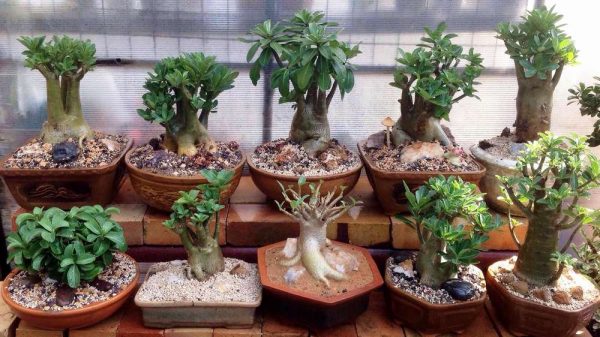
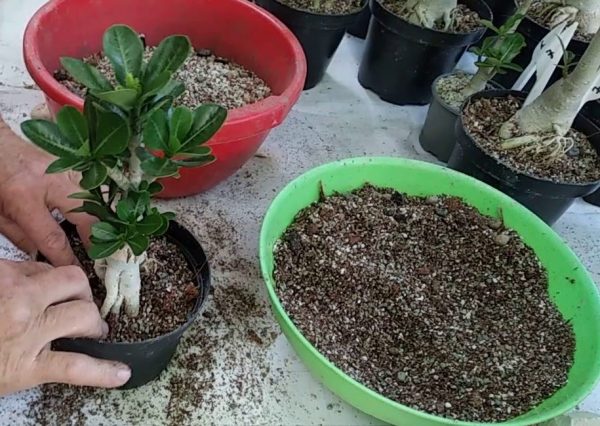
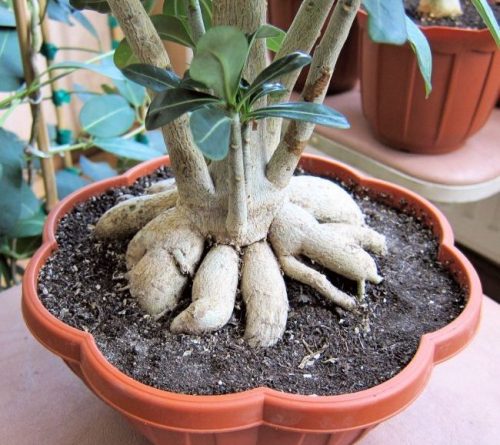
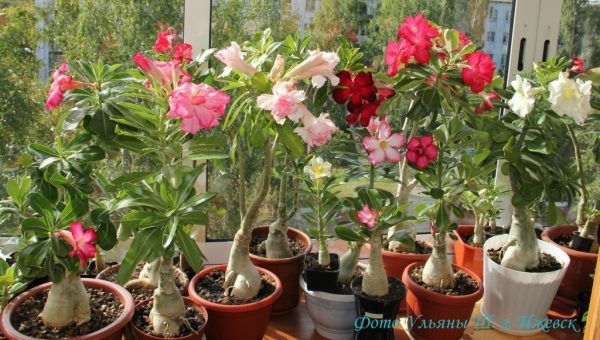
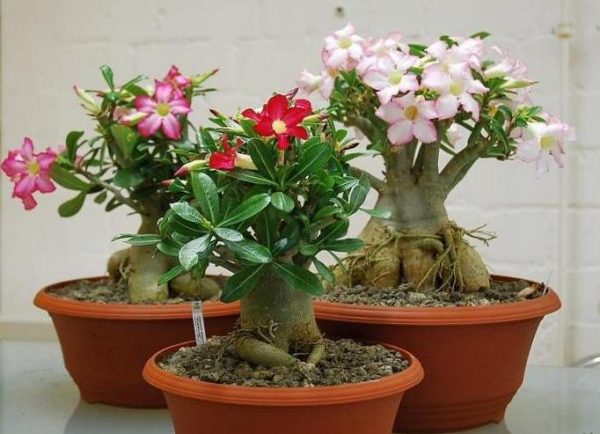
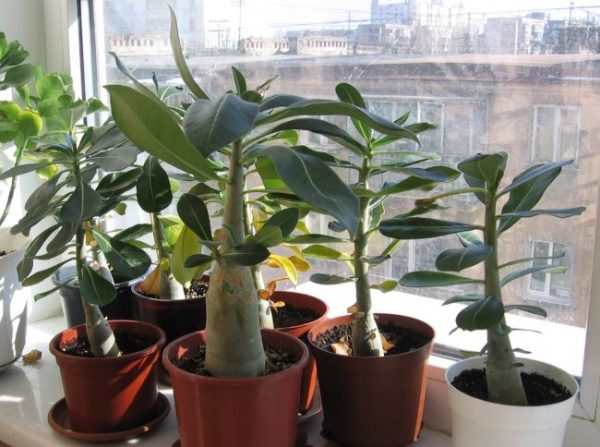
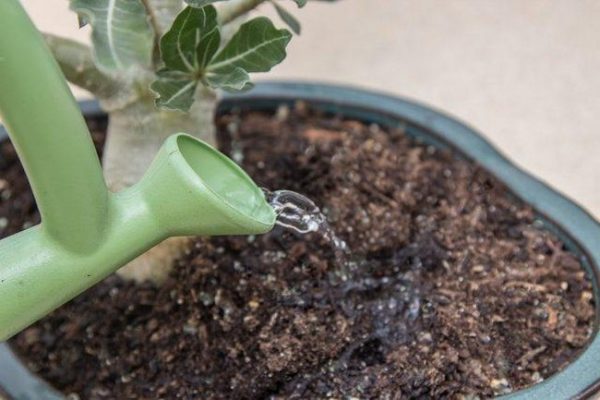
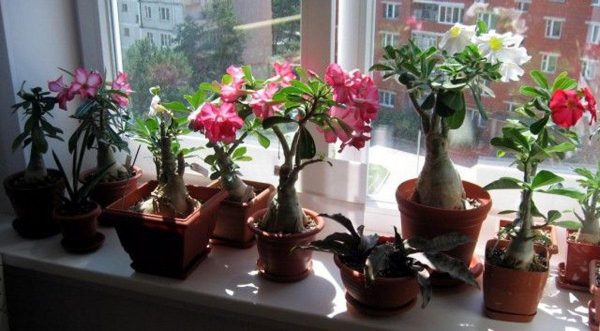
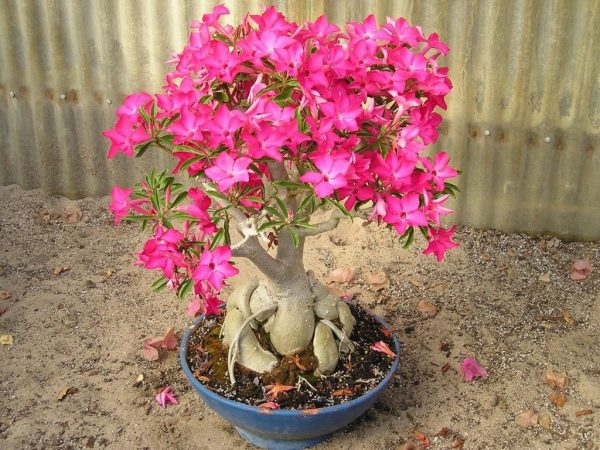

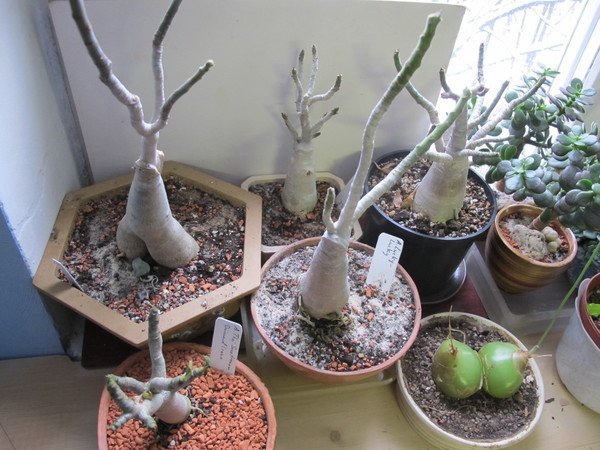
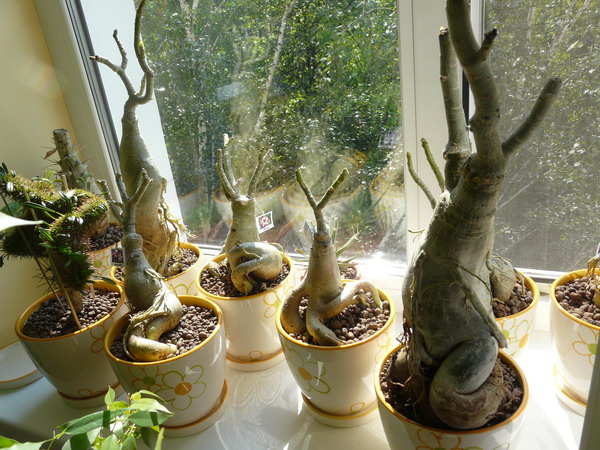
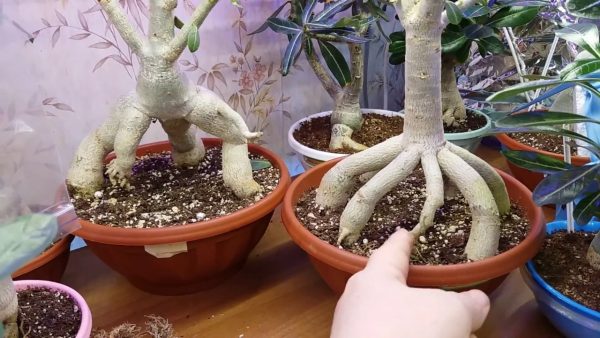
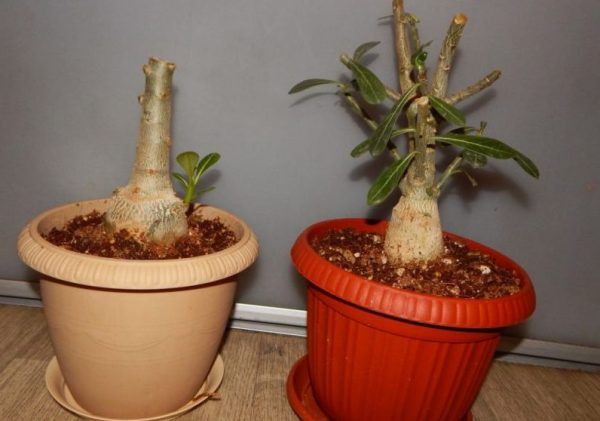
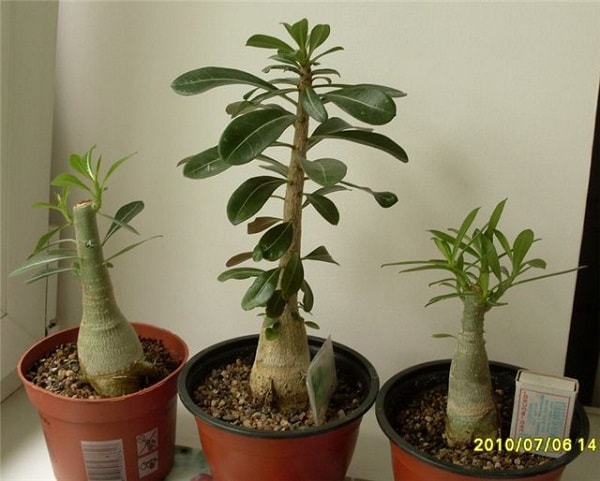
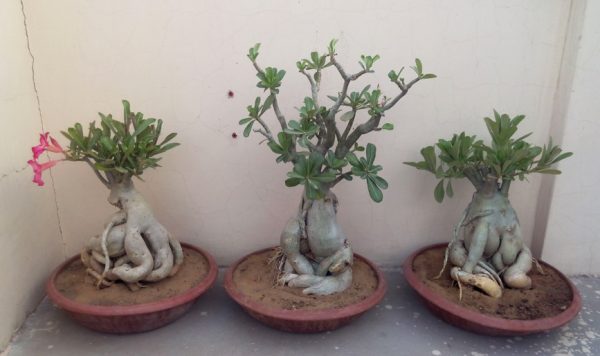

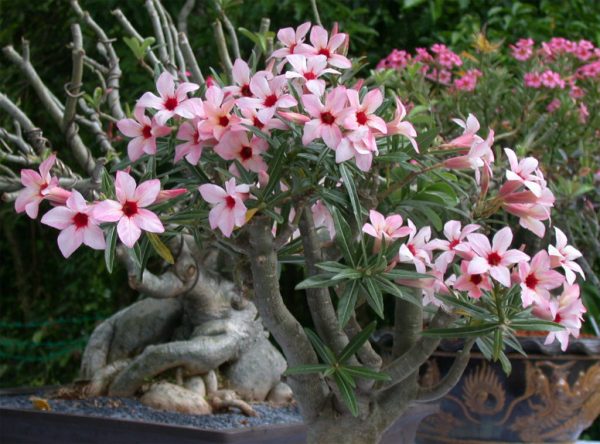
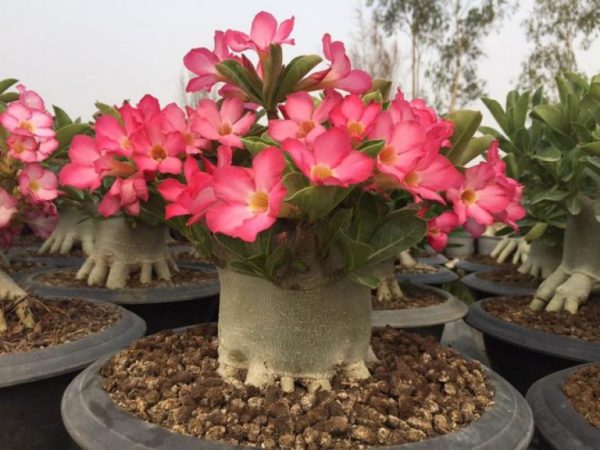
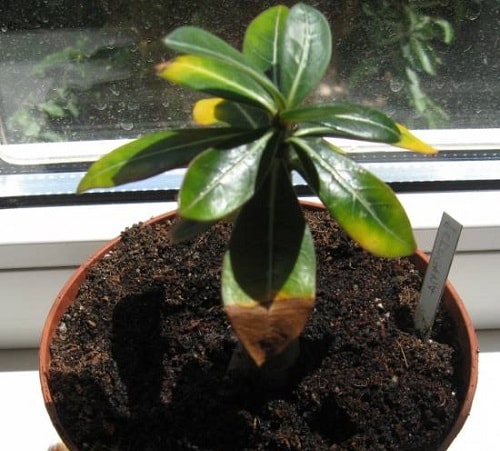
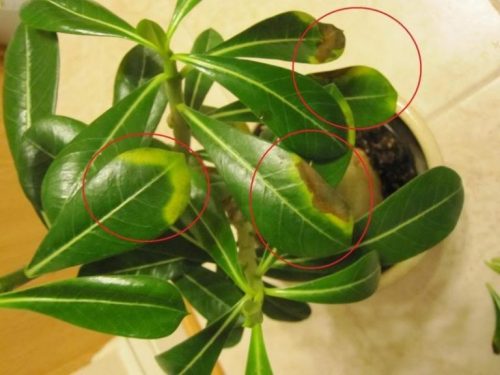


 (4 ratings, average: 3,25 out of 5)
(4 ratings, average: 3,25 out of 5) CUCUMBERS NEVER GET SICK, I'VE BEEN USING ONLY THIS FOR 40 YEARS! I SHARE A SECRET WITH YOU, CUCUMBERS ARE LIKE THE PICTURE!
CUCUMBERS NEVER GET SICK, I'VE BEEN USING ONLY THIS FOR 40 YEARS! I SHARE A SECRET WITH YOU, CUCUMBERS ARE LIKE THE PICTURE! You can dig a bucket of potatoes from each bush. Do you think these are fairy tales? Watch the video
You can dig a bucket of potatoes from each bush. Do you think these are fairy tales? Watch the video
 How our fellow gardeners work in Korea. There is a lot to learn and just fun to watch.
How our fellow gardeners work in Korea. There is a lot to learn and just fun to watch. Eye trainer. The author claims that with daily viewing, vision is restored. They don't charge money for views.
Eye trainer. The author claims that with daily viewing, vision is restored. They don't charge money for views. A 3-ingredient cake recipe in 30 minutes is better than Napoleon. Simple and very tasty.
A 3-ingredient cake recipe in 30 minutes is better than Napoleon. Simple and very tasty. Therapeutic exercises for cervical osteochondrosis. A complete set of exercises.
Therapeutic exercises for cervical osteochondrosis. A complete set of exercises. Which indoor plants match your zodiac sign?
Which indoor plants match your zodiac sign? What about them? Excursion to German dachas.
What about them? Excursion to German dachas.